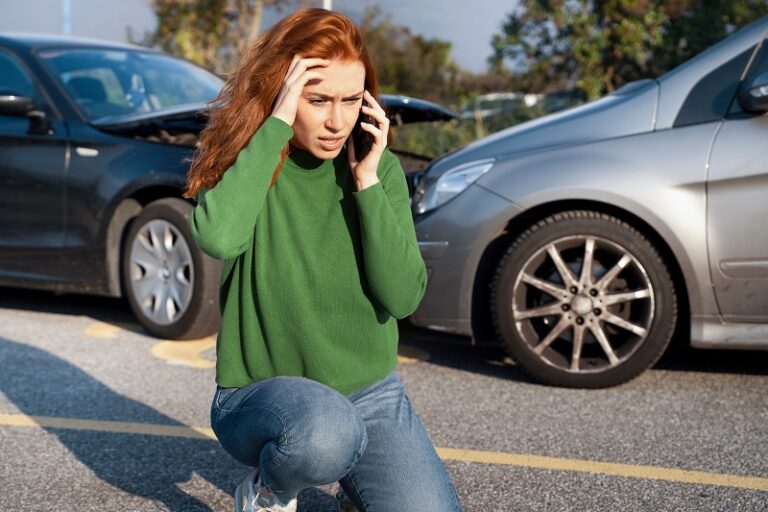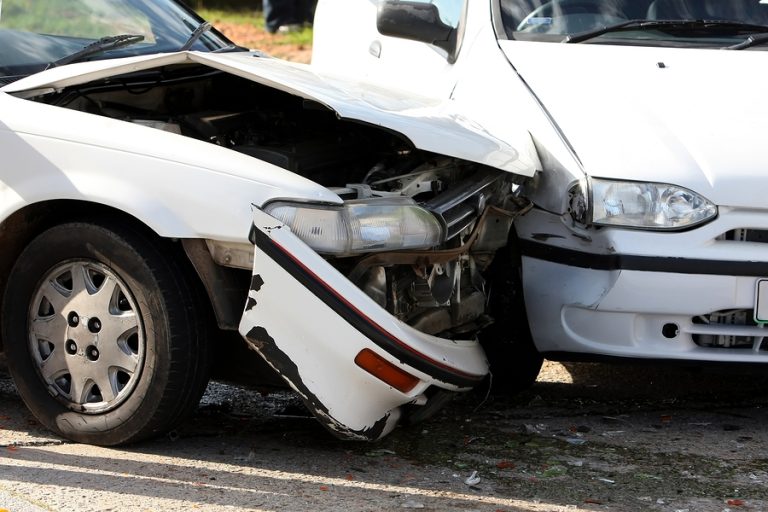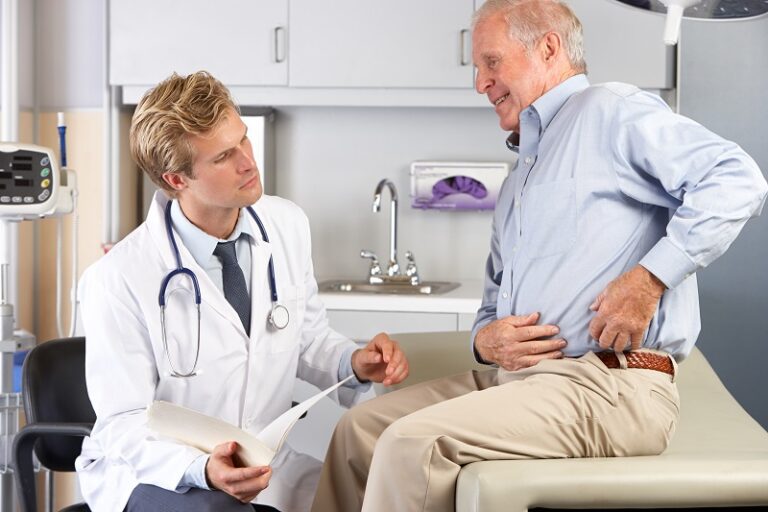Over 2.5 million people are injured severely enough after a car accident to go to the emergency department (ED) every year nationwide, according to the U.S. Centers for Disease Control and Prevention (CDC). Roughly 200,000 are hospitalized after the ED visit. The costs of medical treatment can be steep. Collision-related ED visits cost roughly $3,300, according to the CDC, and crash-related hospitalizations cost approximately $57,000 over a lifetime.
These are frightening statistics. But if you or a loved one is in a car accident, you may have an even more pressing question: who pays my medical bills after a car accident?
It’s an important question, both to your health and your economic well-being. The answer can be complex, as who pays your medical bills may depend on who was at fault for causing the accident and what kind of insurance you carry.
If Another Party Is At Fault for the Accident
California Is a Fault State for Car Insurance
California is a fault state for car insurance. Simply put, that means that the person who is at fault for causing the accident can be held responsible for paying the medical bills of injured parties—and for other damages associated with the accident.

A fault state like California contrasts with a no-fault state. In states with no-fault car insurance rules, every injured person turns first to their own insurance company after a car accident, regardless of who caused the accident. But that’s not the case here. If you were injured as a result of an accident caused by another party, you can pursue compensation for your injuries, either by pursuing the other party’s insurance company (a third party claim) or filing a personal injury lawsuit.
You need to show the fault of the other party. To be at fault, the other party needs to show negligence. Drivers owe a duty of care when they operate a vehicle. The duty of care is to drive cautiously enough to avoid accidents and to obey all traffic laws. If they violate the duty of care, they can be deemed negligent, and thus liable for any injuries the accident specifically caused.
If you are struck by a car that drove through a red light, for instance, the driver who struck you is arguably negligent, because drivers should by law stop on a red light. Can the driver argue that the light was yellow when they entered the intersection or shortly before? They can try, but the law states that drivers should exercise caution when facing a yellow light. Prudence dictates that they should stop if necessary. The driver has violated the duty of care by disobeying the law.
Other drivers are not the only potentially responsible parties. If a vehicle malfunctions, the malfunction can cause an accident. Defective tires, for example, can blow out and create a traffic hazard, because cars can become very difficult to control after an accident.
If a malfunction of some type causes an accident, the manufacturer of either the component or the vehicle itself could be deemed negligent. Why? For the same reason that drivers can be. Manufacturers, both of components and of automobiles, owe a duty of care to the public to produce safe vehicles. If they are defective in manufacture and thus not safe, it’s a violation of the duty of care.
Financial Responsibility Law in California
As most California drivers know, our state has a financial responsibility requirement in place. Simply put, it means that financial responsibility (also known, as the Department of Motor Vehicles indicates, as insurance) is required on any vehicle that is parked or operated on the state’s roads. The mandated minimums for insurance cover accidents the driver or people in their household cause.
The mandated minimums are as follows:
- $15,000 for injury or death to one person in an accident caused by the insurance holder
- $30,000 for injury or death to more than one person in an accident caused by the insurance holder
- $5,000 for damage to property in an accident caused by the insurance holder
Due to the financial responsibility law, most drivers in California carry these liability amounts. If you are injured by a negligent driver, this insurance will pay your medical bills.
After an auto accident, get the other party’s insurance information. If you didn’t, or were too seriously injured to do so, DMV will send you verification if you send in a Financial Responsibility Request Form. You should also provide your own insurance information to the other driver(s).
Report any accident to your insurance company. Many insurance carriers require that accidents be reported to them promptly, whether they will be responsible for paying claims or not.
What if the At-fault Driver Isn’t Insured?
At times, you may be in an accident where the at-fault party isn’t insured, or doesn’t have the mandated minimums. They may be from other states where insurance isn’t required, for example, or simply be a driver who has failed to obtain bodily injury liability insurance. Some drivers may have had an insurer deny coverage as well.
Finally, if you have been struck or otherwise injured by a car that did not stop, you may not be able to access their insurance coverage (this is classified as a hit and run, and is illegal in California; unfortunately, despite its illegality, hit and run accidents do occur).
Who pays your medical bills if you are involved with an at-fault driver who isn’t insured or is underinsured?
It is possible to obtain underinsured/uninsured motorist coverage when you obtain your own insurance coverage. In this case, your own insurance would pay for your medical bills. Getting such insurance is a form of risk management for you, especially since 15 percent of California motorists are estimated to be driving without insurance, according to the Insurance Information Institute.
It is not required as part of a policy, but an insurance company is required to offer them to you. If you choose to not have this type of insurance, you’ll need a sign a waiver indicating your choice.
How Do I Prove That the Other Party Is at Fault?
In cases where the other party is at fault, you will have to prove negligence, either to their insurance company (if you file a third-party claim) or in a court (if you file a personal injury suit). How do you do that?
One of the chief pieces of evidence in any car accident is the police report. Law enforcement will make note of the scene and the environment, indicating the vehicles involved, other parties involved, such as pedestrians or bicycles, the weather, time of day, and so on. They will interview all the parties and may interview witnesses. The police can often tell what caused the accident by the scene itself, including the position of the vehicles, the types and extent of the injuries, the trajectories, and signs such as skid marks or struck objects.
Make sure you get a copy of the police report. If the accident report was developed by the California Highway Patrol (CHP), you can fill out an online Application for Release of Information and obtain the report for a small fee. You will have to provide a copy of your driver’s license or identification card to prove you are a party of interest, and entitled to a copy of the CHP report.
If the accident was investigated by local law enforcement, contact them to find out how to get a copy of the police report.
The California Vehicle Code requires that drivers report any accident if someone is injured or killed. The CHP should be contacted if the accident occurs on the highway. They have the authority to follow-up with witnesses, drivers, and passengers to request additional information. If it is local, contact local law enforcement.
There are several other legal requirements regarding reporting an accident. Both you and your passengers must provide identification at the scene. If you are driving someone else’s vehicle, you must supply the owner’s information.
There may be times when law enforcement doesn’t come to the scene. If that occurs, you are still responsible for filing a report as soon as possible, either at a CHP location or a local police department.
In addition to the police report, documentation can provide evidence. If you have a smartphone or camera at the scene, take pictures of the area, including all vehicles involved, the scene, and your injuries. All can show the environment in which the accident happened, the damage to the cars (which can be analyzed to show how the accident happened), any damage to the surrounding environment, and the road.
Pictures of your injuries can be used as evidence of how severe the injuries were. If you do not have a smartphone or camera, take notes about the accident and how it occurred, and your injuries. If there are eyewitnesses, interview them if you can and take notes. Get their contact information.
It’s a good idea to contact a personal injury lawyer about establishing that another party was responsible for the car accident. Lawyers work with investigative teams that can use forensic analysis and other evidence to establish how the accident occurred. They may also be able to find out if surveillance cameras have footage of the accident.
Doctor’s notes are also vital pieces of evidence about the nature of your injuries. Be sure to keep records of your visits to the doctor and emergency department and hospital visits, if your injury required those. Be sure, as well, to see a doctor as soon as possible after the accident, so that you are thoroughly checked out for potential injuries.
What Injuries Can I Recover Compensation For?
People can sustain injuries in almost any way conceivable in a car accident. Your injuries could include the following.
- Contusions (bruises)
- Lacerations (cuts)
- Sprains
- Broken bones
- Traumatic brain injury (TBI)
- Damage to internal organs
- Spinal cord injury
- Head injury
- Neck injury
- Scarring and disfigurement
- Loss of limb(s)
- Wrongful death
Medical bills generally refer to all medical-related treatment for injuries, including:
- Doctor visits
- Hospitalization
- Surgery
- After-care visits
- Clinic visits
- Prescription medication
- Rehabilitative therapy
- Retrofitting home to accommodate injury, such as a wheelchair ramp if the injury has caused you to have to use a wheelchair.
Note that the at-fault party should pay not only for medical bills you’ve already incurred, but for future medical treatment if your injury is expected to require treatment in the future.
If a car accident resulted in a TBI, for example, you may need ongoing therapy. Your doctor or an expert in the field will likely be consulted about the type of ongoing treatment likely to be needed and its duration.
Can Anything Be Paid Beyond My Medical Bills?

If you have been injured in a car accident caused by another party, you are entitled to compensation beyond your medical bills. If your injuries have caused you to lose time from work, for example, you are entitled to receive payment for wages lost from work. This is usually determined by multiplying the time you lost by your existing wages. Any of these reasons or other strenuous tasks you have to do to recover from your accident should serve as a warning sign of when you should get an attorney.
If you are expected to need to take time off from work in the future, you are entitled to receive future wages lost from work as well. If your injuries have made you unable to perform your job duties or to need to move into different work, you may be eligible for compensation for lost earnings power.
You may also be entitled to compensation for pain and suffering. Generally, a jury is responsible for determining the amount of pain and suffering from a car accident. A jury may look at factors such as the amount of physical pain from your injuries, the mental or emotional suffering or anguish you experience as a result of the accident and its aftermath, and the potential loss of consortium and companionship that resulted from your injuries.
Should any questions about your situation remain, feel free to ask a car accident lawyer.







